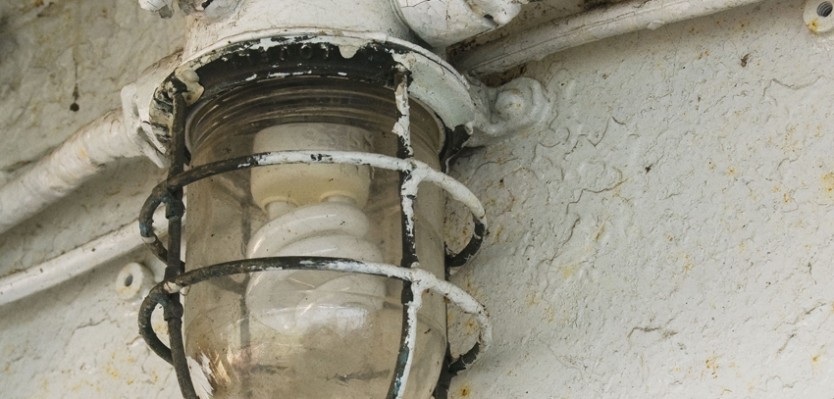
Interview with Byron Westbrook
Pooja Kakar: What are you planning to present for “DiA on the LILAC”?
Byron Westbrook: I’ll be doing two things—a performance at the opening and an installation in a lower hallway, both of which address the architecture and physical material of the LILAC. The performance will involve letting the audience navigate the different spaces and nooks of the boat while holding small speakers that emit different sounds. The installation will be centered around creating a sort of sonic framing of existing sounds and resonant qualities of the hallway.
PK: How are you planning on utilizing the unique space on the LILAC to showcase your work and create an experience for the viewer?
BW: The performance will allow the audience to explore the LILAC, aided by droning sounds playing from speakers that they carry. Each space will reflect differently, so the sound will change from room to room, both in tone and in apparent volume. In addition to this, each speaker will be playing a different tone, so as people move about the boat, through different rooms and floors, they will hear different combinations of tones depending on the position of other speaker-carrying audience members. This will create both a heightened awareness of surroundings as well as a sort of social fabric built from tone relationships and the navigational aspect of the piece.
PK: Could you explain your process—from the inception of an idea to its execution in an exhibit, in greater detail?
BW: I tend to be thinking on a general level about how an audience interfaces with an environment, social situation, listening situation, performance situation, architecture of a space, imposed rules of a space and how associated factors guide our perception and awareness at any particular moment in time. I experiment a lot with different ways of using sound as a sort of guide or conduit to some type of change in perception and awareness. Generally, I work in a way that is very site-specific. I am largely using a battery of techniques to explore how to best address and transform the experience of a space using sound. It is generally a matter of trial and error, observing how an audience might navigate a particular space, bringing in a range of materials, speakers, and recordings that seem appropriate and then working with the dynamic between the sound and space until it feels like my materials are achieving a transformative quality that transcends the space and materials.
PK: What other projects are you currently working on?
BW: I am working on a piece that uses both sound and lighting, which are programmed to coincide in a way that changes one’s social and perceptual boundaries within a space. The piece is a narrative sequence with transitions functioning similarly to cuts in film editing or theatrical scene changes, and that is imposed as a form over the environment it inhabits.
PK: How does external sounds affect or inspire your sound pieces?
BW: I take all existing sounds and possibilities of sound into consideration when realizing a work. If it is a space where people are likely to be talking a lot, I will try to work in a way so that talking and the sound can work together to all be part of the experience. If there are loud existing sounds, I may try to use them as part of my work or even have the work itself frame those sounds as a central element.
PK: What meanings or readings do you think may be translated by viewers from their experiences of your sound installations?
BW: I think there is a pretty wide range of possible experiences of my work. In most situations it tends to magnify whatever people bring into it, and a lot depends on the state of mind that the viewer is in. I have heard some people say that it induced a calm, meditative state and others who say they experienced extreme anxiety. For the most part, I am just working to open up possibilities for people to experience something unexpected and potentially new to them on a perceptual and emotional level.
PK: How crucial is the placement of each piece of equipment in creating your desired atmosphere and effect—what kind of planning goes into each placement?
BW: Placement and positioning of materials are absolutely crucial, at least in installation work. The materials respond to structure and act structurally at the same time. There is an immense amount of planning and trial and error involved, although in the end, it comes down to ears and physical experience.
PK: Can you describe the process of how realize your work within your studio space and artist residencies? What role does the physical space play?
BW: My studio process is not so much about realizing work in the studio. It is more about developing ideas and materials to be used in site-specific situations and experimenting with different types of audience interface. I spend a lot of time just developing sounds–simple sounds–that have a physical, textural quality to them. Studio time is also spent working on technical experimentation, e.g., how might I turn a sheet of metal into a speaker to deliver x type of sound, or how can physical proximity to x type of sound affect its function. Ultimately the space and the site shape the piece more than anything else.
PK: You often collaborate with performers, artists, and musicians; how does this outcome differ from your original vision?
BW: I generally don’t do a lot of collaborating in terms of realizing a project, but I would consider my participatory work, like the performance for the “DiA on the LILAC” opening, to be a collaboration with the audience. I generally set up a scenario with a range of possibilities and present that to the audience, and whatever happens once it is out of my hands is the piece. I find it exciting to not know what the outcome will be.
Tags: Journal